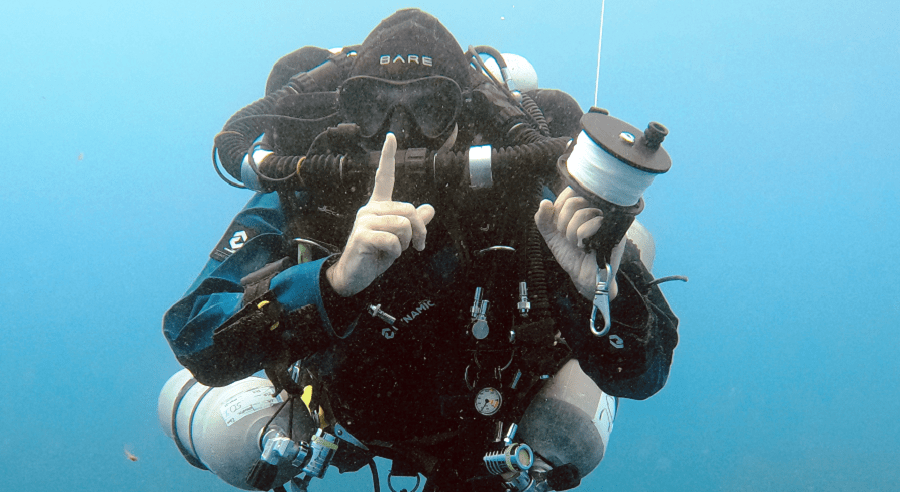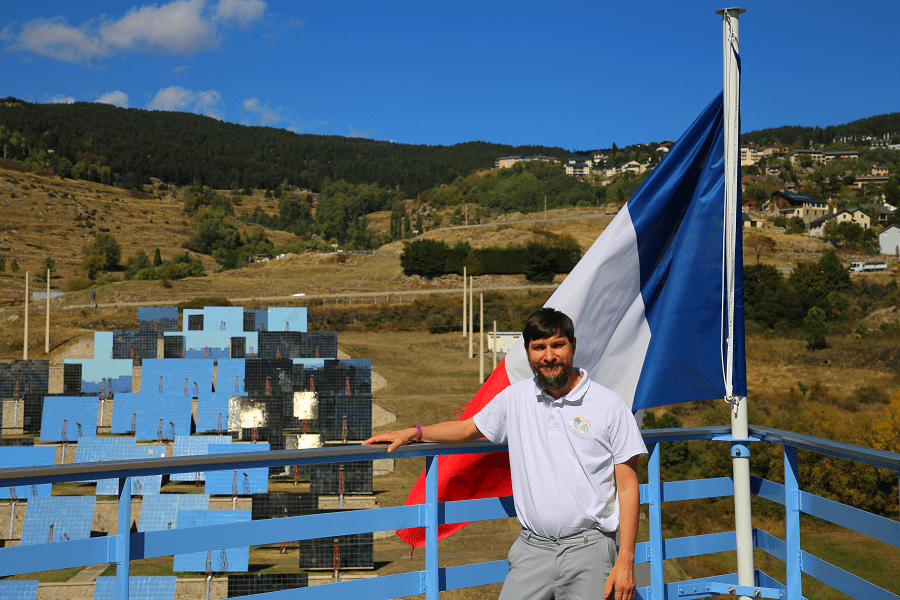Opened to the general public in 2000, Pic du Midi was categorised in 2003 as a natural park due to the beauty of its landscape. On 19 December 2013, it was labelled as an International Dark Sky Reserve – the first in France. The Deputy Director of Pic du Midi, Nicolas Bourgeois, a doctor in geography specialised in starry landscapes and amateur astronomer talked to all-andorra.com about this magic place where for more than 140 years, space researchers and technicians observe, decrypt and photograph the sky and all its planets up to the most distant galaxies.
Interview: Irina Rybalchenko
Talk to us about the school of science and the theories on the origin of the universe, the solar system and the Earth on which you base your research…
Since always, societies have wondered about the world above their head. Through the centuries and different cultures, the conceptions of the universe have never ceased to evolve. Once considered as a ceiling sprinkled with stars, nowadays we consider it as an infinite space-time in which the matter has been being organised for 14 billion years. From the 17th century onwards, instrumental observation has constructed and deconstructed the great readings of the universe. Galileo was the first to use a telescope to observe the stars: his observations introduced the revolutionary idea of the position of the sun at the centre of a planetary system. This act outlined the beginnings of the scientific method: any theory must be verified through observation.
But what is the universe? Is it a life form? A matter? A matrix?
I would not dare describe the universe as a living organism. It is a gigantic system ruled by four fundamental forces: gravity, electromagnetic forces, and weak and strong nuclear forces. Inert matter is modelled, transformed by and with these forces. This perpetual organisation of matter has finally generated life. Our planet hosts the only life forms that we know for the moment, among which we are to be found, of course. And what I like the most in this cosmic story is to close my eyes and to say: “I am, I exist”. When we understand this simple experience, we realise that matter has gone from chaos to a state of self-awareness!
And do you believe in the existence of extraterrestrial civilisations?
I’m not trying to believe in it, it’s more of a weird conviction. When you start to align some numbers, you quickly realise that it is very likely that life may have emerged somewhere else in the universe. Considering that 8 planets orbit around our sun, a “banal” star, and that there are billions of stars in our galaxy… and that billions of galaxies are to be found in our universe, I only can be convinced that there is extraterrestrial life.
However, no matter how strong my conviction is, it only scratches the surface of a possibility. It is very difficult to give more details to this idea. The thousands of exoplanets that we discover day after day only reveal, for now, new concerns. All the observed planetary systems are at tens and hundreds of light-years from our planet. Detecting them is already a serious step forward! The great instruments that will be created soon will allow us, I hope, to make great progress in detecting organic life markers on those planets. But are the criteria for the eruption of life on Earth cosmic standards? Or are there other environments in which life could emerge?
What do you think about the hypothesis of an expanding Earth?
I am not sure if I know or understand this hypothesis but it brings me back to another idea. Since the invention of the first means of communication that used electromagnetic waves and since the extraordinary deployment of various means of communication, our planet has become the epicentre of a huge source of information that goes beyond our atmosphere. Some of our space probes have also reached the borders of our solar system. Closer to us, thousands of satellites and hundreds of thousands of fragments orbit around the Earth. These objects, even if artificial, are produced from our planet. From a certain point of view, our activity has made the earth grow beyond its own borders.
What are the main risks that you foresee for humanity and how can we deal with them?
The main risk for humanity is also its one and only way to limit the risk: ourselves!
It’s not a secret anymore, even for those who refuse to believe in it and close their eyes: our lifestyle, our relationship with the environment and our conception of progress, have all generated an unprecedented change in the climate and impacts on life, leading scientists to talk about the 6th extinction and anthropocene. In other words, the Earth has never seen such a rapid collapse of life and a transformation of its balance that is translated nowadays as a form of a new geological era. Today, our trace is indelible. However, if he have the material, societal and intellectual power necessary to devastate, we must have the same means to influence our ability to destroy.
The biggest challenge of the 21st century is that our enemy is not an external nation or a dangerous ideology. What we must face is much less frontal. It is something difficult to catch… We must face the consequences of our lifestyle and, perhaps even harder, dare to change it.
What does Pic du Midi represent nowadays in terms of science?
Pic du Midi is now 10,000 sq.m. of built floor space, comprising 6 floors, 5 km of hallways that connect all the buildings to facilitate travel no matter how the weather is, 2 transformers of 1,200 kVa, and a generator of 850 kVa…
The site has several services and activities that share the same space on a daily basis. Only the interministerial building classified as top-secret military is in total autarky – it is essentially a telecommunications base. Located on the western ridge, we can find French Television Broadcasting Facilities (TDF) with a 101m high antenna and a regional radio and TV transmitter with a range of more than 400 km.
The French Civil Aviation Authority (DGAC), France Telecom and Météo France are also present there.
And of course, there are buildings reserved for the scientists: the Robley Dome that has a telescope of 55 cm, the Coronagraph (which studies the solar corona throughout the year), the Tourelle Dome (observation of the solar surface), the Gentili Dome and its one metre telescope equipped by NASA and the Bernard Lyot telescope.
At the end of the 1950s, when the moon was still not known, Pic du Midi was allowed to carry out an important photographic project to improve the knowledge on this satellite of the Earth. Every evening, hundreds of pictures were taken under the dome of the Pic du Midi.
hese pictures were brought down by cable car and then recovered by the American army who would take them to an airport. Afterwards, they crossed the Atlantic Ocean to Saint-Louis, in the south of the United-States, where they were developed to be analysed. Approximately 60,000 shots are still preserved, for a programme that has mobilised approximately 50 individuals at the Pic for ten years.
Could you tell us more about the projects that are currently being carried out here?
The sun is observed by Pic du Midi from two domes: the Jean Rösch bezel and the Coronagraph.
The Jean Rösch bezel has allowed scientists to study the dynamics of the movements of the surface and of the magnetic field with a CALAS wide-angle camera (4000 x 4000 pixels) for the photosphere and a spectropolarimeter allowing scientists to analyse the upper layers of the sun such as the chromosphere.
Also, research on the geometry of the sun has been carried out to establish its flattening which is directly linked to the physical conditions that rule inside the sun itself.
In the Coronagraph’s dome, the CLIMSO instrument is dedicated to the continuous study of the solar atmosphere’s dynamic phenomena, analysing the great heterogeneity of temperatures, densities, magnetic and electric properties of its regions. It is therefore the global diagnosis of solar activity (simultaneously analysing the cold corona, warm corona as well as events on the surface…).
Regarding the atmosphere observations field, the Pic du Midi station has offered (since the end of the 19th century), 2 types of results that have a real impact on an international level: the evolution of ozone concentrations in the atmosphere and of the temperatures. Observations on atmosphere pollution on a synoptic scale and the observation network of the chemical composition of the troposphere are also being carried out.
How many scientists work here?
5 to 30 people work in the Pic du Midi Observatory 24/7. This latter one is part of the Midi-Pyrénées Observatory (OMP) that has more than 400 people of which half of them are researchers. The head office of the OMP is in Toulouse and consists of 6 laboratories and 17 observation plants for research and administration; the Pic du Midi Observatory and an additional station in Tarbes also have a night activity team, aerology team, technicians and astronomers.
And now, it is also an incredible place for tourists…
Yes, the Pic needs to be visited. If the Pic is not known, it would fall into ruin… Since the arrival of tourists to the site, there is a real exchange between scientists and tourists – astronomers who wish, of course, to disclose their scientific findings to a large audience.
The daily secrets and findings that the scientists come across, that were once reserved only for a few privileged individuals, are today accessible to everyone.
Thus, visitors go by cable car from the heart of Mongie, the ski slope in Grand Tourmalet, to get to the summit (2,877 metres) in 15 minutes. From the summit, we can discover and embrace all the Pyrenees mountain range, from Catalonia to the Basque Country. From east to west, the horizon is open to more than 300 km of mountains.
We are constantly developing and trying to offer tourists the most modern and practical services. The digital evolution, the HistoPad, is an innovative guide for visitors available on a touch-sensitive tablet. Therefore, each visitor can be immersed in an interactive trip. We have 400 of them currently.
For this place to be visited, and for people to wish to visit it again, we regularly organise different events such as concerts. Regarding sports, Pic du Midi is a place where several sports experiences can be practised – skiing and snowboarding in winter and mountain biking in summer.
And how do you plan to develop the site in the future?
Next year there will be a new information centre for bachelor degree students/doctorate students, a laboratory room and a research room. It will be a new building for the training of young researchers.
Additionally, from September 2019, daily visitors will be able to learn more about the operation and secrets of the dome. In the middle of the old dome that had the Siderostat, a new generation telescope will allow visitors to observe the sun live. Sitting on a bench, 27 individuals can attend a visual and sound performance that alternates between a 3D animation film/mapping projected before them and a low-angle shot of the telescope “in action” with sound and light work on the dome above them.
What is the Pic du Midi’s budget?
A huge programme of modernisation and reorganisation of the site for a total amount of 7 million euros has been carried out. It has been funded by Europe, the State, the Occitanie Region, the Haute-Pyrénées Department and us. All the benefits of tourism are reinvested directly in Pic du Midi to continue its development. Last year we received more than 143,000 tourists with a revenue of 6 million euros.
Last year, the site was visited by the President of France, Emmanuel Macron. What was the reason for the visit?
He just came to inaugurate the new facilities that we had prepared for tourists: the planetarium, pontoon in the sky, new restaurant, experience space…
Would you be interested in creating a scientific film, with the BBC for example?
Of course, I would love to create a film with the BBC. Pic du Midi is the oldest observatory of the world with a great story. And it is becoming more and more famous at an international level. We are open to visitors and we would like to share information with everybody that shows interest in our work.











